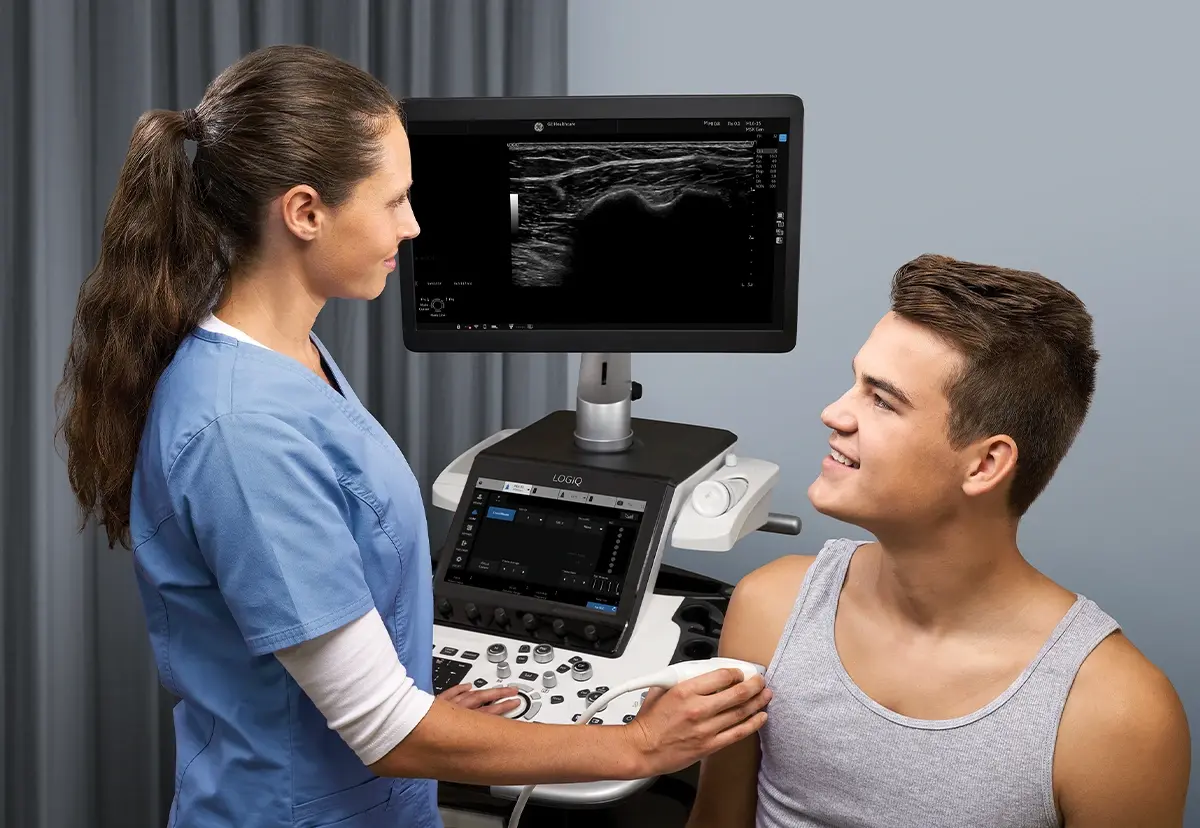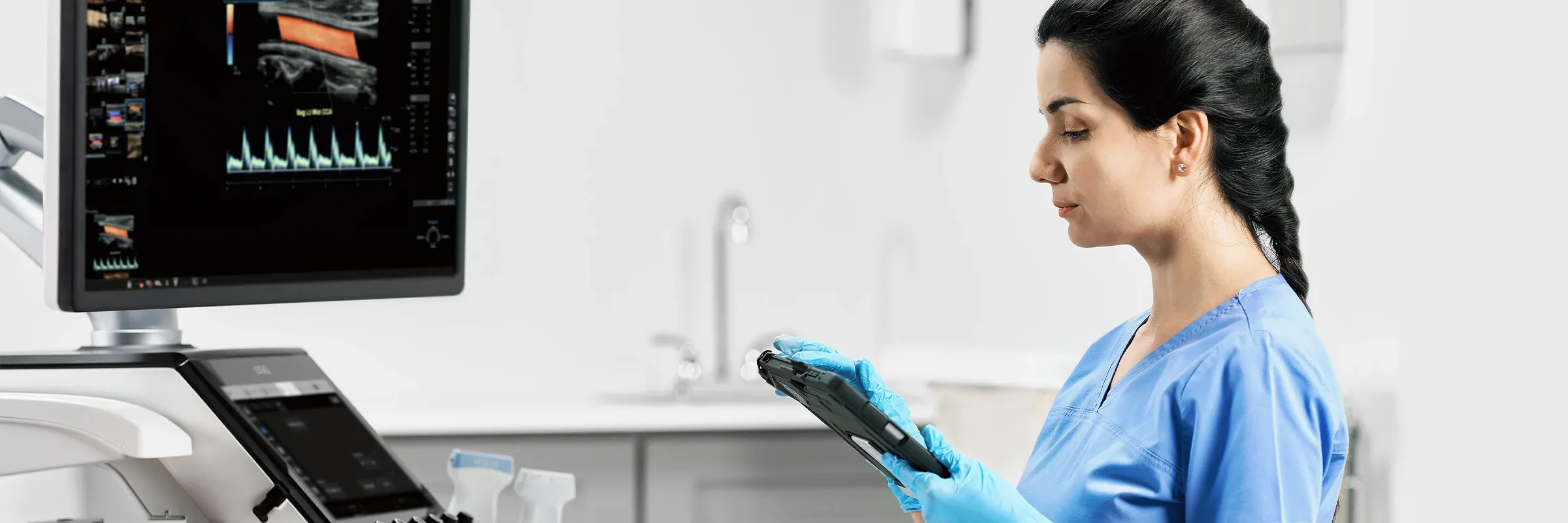
In physical therapy, four ultrasonography categories are recognized: diagnostic, rehabilitative, interventional, and research.
MSK ultrasound: diagnosis
Physical therapists use musculoskeletal ultrasound (MSK-US) to assess pathoanatomic structures, aiding in physical therapy diagnoses. While they don't make medical diagnoses, they can identify lesions like fractures and refer patients for further medical care. MSK-US is cost-effective and matches MRI in diagnosing various conditions like meniscal injuries, ACL and PCL injuries, Achilles tendinopathy, peripheral nerve injuries, lateral epicondylitis, thumb ulnar collateral ligament injuries, rotator cuff tears, and supraspinatus lesions. It’s equally effective in evaluating injuries sustained in acute athletic situations.
MSK-US is increasingly valued for its ability to dynamically visualize muscle movements and structure, both in motion and at rest. Experts have developed dynamic US protocols for real-time evaluation, enhancing diagnostic accuracy. A unique feature of MSK-US is Doppler imaging, which analyzes blood flow changes using the Doppler effect. This technique is instrumental in diagnosing conditions like deep venous thrombosis, assessing vascular supply to joints, and detecting inflammation and effusions.

MSK ultrasound: rehabilitation
Rehabilitative MSK ultrasound imaging is employed to offer instant feedback to patients undergoing physical therapy. It has been noted before that instantaneous ultrasound feedback is beneficial for educating patients on how to properly engage the transverse abdominal muscle, particularly in those experiencing lower back discomfort. This imaging technique is also utilized to evaluate muscle performance, aiding in the identification of athletes who may be at an increased risk of injury. Additionally, it finds use in the rehabilitation sector, particularly in addressing urinary incontinence through pelvic health exercises.
MSK ultrasound: intervention
Physical therapists have the option to include musculoskeletal ultrasound in their treatment plans to enhance therapeutic outcomes. There was a report on a case where a runner suffering from plantar fasciitis was treated with the help of MSK ultrasound imaging. This technique aided in determining the most effective treatment areas and in monitoring the patient's progress. Although dry needling has become more common among physical therapists, and ultrasound has been increasingly used to improve needle accuracy, research indicates that ultrasound-guided dry needling does not offer extra benefits for patients with chronic neck pain when combined with physical therapy.
Usually, the application of MSK ultrasound for intervention, such as injections, is conducted by medical professionals. While it generally falls beyond the usual practices of physical therapists, MSK-US can significantly enhance the precision of needle injections for delivering anti-inflammatory treatments or for procedures like prolotherapy. A new method called "hydrodissection" has also emerged in the field of musculoskeletal treatment. In this procedure, MSK-US guides the insertion of hypodermic needles into muscles and fascial layers to administer saline. This process helps in dissolving adhesions and improving the movement of fascial tissues.
MSK ultrasound: research
Musculoskeletal ultrasound (MSK-US) is widely recognized for its role in evaluating soft tissue conditions within the realm of physical therapy. Traditionally, assessing muscle mass and composition involved techniques like bioelectrical impedance, dual-energy X-ray absorptiometry, CT scans, and MRI. However, MSK-US offers a straightforward, quick, and non-invasive method for accurately measuring the length and thickness of muscles and tendons. It goes beyond these dimensions to also examine the angles of muscle fibers, providing insights into the structural aspects of soft tissues.
The capability of MSK-US to quantify muscle thickness offers a window into understanding muscle contractions. For instance, findings have indicated its effectiveness in depicting the activation and size of trunk muscles during certain physical activities that do not involve maximum effort. Moreover, it has been applied to measure the thickness of fascial muscles, adding another layer to our understanding of muscle dynamics. Additionally, MSK-US is instrumental in evaluating the stiffness of tissues, including tendons, by employing techniques like shear wave elastography. This particular method allows for the assessment of stiffness in tendons and muscles by observing how they respond to pressure, represented visually through a color-coded map.
Furthermore, MSK-US has the unique advantage of being able to measure blood flow, particularly in arteries, thereby illuminating the effects of physical therapy interventions aimed at enhancing circulation to specific areas. This is achieved by examining changes in arterial diameter and the flow rate of blood pulses, especially after therapeutic procedures or during physical exercises. This facet of MSK-US underscores its versatility and value in a clinical setting, offering a comprehensive view of tissue health and function that supports targeted therapeutic strategies.
Summary
In conclusion, musculoskeletal ultrasound (MSK-US) emerges as a cornerstone in the realm of physical therapy, providing an unparalleled depth of insight into the musculoskeletal system. This innovative imaging modality not only revolutionizes the way physical therapists diagnose and treat various conditions but also significantly contributes to research, enhancing our understanding of muscle and soft tissue dynamics. Its ability to deliver real-time, accurate assessments without the risks associated with radiation places MSK-US at the forefront of non-invasive diagnostic and therapeutic techniques. By facilitating a more informed approach to treatment, MSK-US plays a pivotal role in improving patient outcomes, underscoring its invaluable contribution to the field of physical therapy. As we continue to harness the full potential of this technology, the future of patient care looks increasingly promising, with MSK-US leading the way toward more effective, efficient, and personalised therapeutic interventions.
JB01265AFG



 Clinical specialty
Clinical specialty











